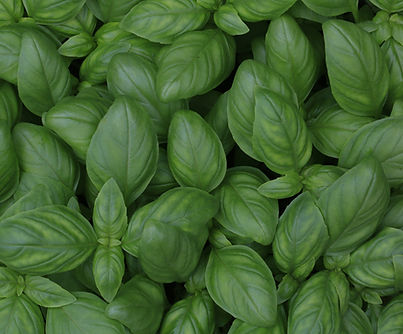Bringing Nature into Your Space

Go beyond the menu to understand your food like never before. We provide the tools to bring the growing experience to life. From brief histories to how and why it's cultivated, our resources help you understand the plants you're about to eat.

Meet the Greens

Basil
History
Originating in India where it was used for culinary, medicinal, and spiritual purposes, the ancient Greeks and Romans believed it symbolized love and fertility. Today, it's grown worldwide and is the most popular aromatic culinary herb on earth.
Flavor/Smell
Basil boasts a fragrant and robust flavor characterized by a sweet, aromatic, and slightly peppery profile. It carries hints of anise and cloves with a fresh herbal essence. The scent of basil is equally delightful, emitting a strong, sweet, and earthy aroma with hint of mint and clove.
Use
Pizza, Pesto, Caprese Salad, Sauces, Thai and Southeast Asian Cuisine, Soups, Salads, Sandwiches, Beverages, Desserts.
Bit1 System Environment
Seed variety: Italian Large Leaf Basil.
Lifecycle: 28 days seed to plate.
85F
60% RH
0.9 kPa
6.2 pH
800 PPM TDS
24.19 DLI (mol/m²d)

Parsley
History
Parsley, scientifically known as Petroselinum crispum, has a history dating back to ancient civilizations such as the Greeks and Romans, who used it both for culinary and medicinal purposes. Parsley was associated with symbolism and mythology, often used to crown victors and decorate tombs.
Flavor/Smell
Parsley has a mild and fresh flavor with hints of grassiness, herbaceousness, and a subtle peppery note, occasionally accompanied by a mild bitterness, particularly in the stems.
Use
Garnish, Seasoning, Pesto, Sauces and Salsas, Potato Dishes, Flavoring Soups and Stews, Herb Butter, Dips, Detoxifying Drinks, and Tea.
Bit1 System Environment
Seed variety: Giant of Italy.
Lifecycle: 42 days seed to plate
78F
55% RH
1.02 kPa
6.2 pH
800 PPM TDS
19.80 DLI (mol/m2d)

Cilantro
History
Cilantro has a long history, dating back to ancient Egypt where it was found in tombs. It spread to Asia through trade, becoming integral to Indian, Chinese, and Southeast Asian cuisines. European colonists introduced it to the Americas, where it gained prominence in Mexican and Latin American cooking.
Flavor/Smell
Cilantro has a distinct and polarizing flavor, with bright, citrusy, and slightly sweet notes along with an herbaceous, almost soapy undertone. Its fragrance is fresh and pungent, with a combination of citrus and earthy notes.
Use
Salsas, Guacamole, Tacos and Burritos, Thai and Southeast Asian Dishes, Indian Curries, Cilantro Rice, Soups, Salads, Sauces and Dressings, and Garnish
Bit1 System Environment
Seed variety: Calypso Cilantro.
Lifecycle: 35 days seed to plate.
80F
60% RH
0.9 kPa
6.2 pH
800 PPM TDS
19.80 DLI (mol/m²d)

Oregano
History
Oregano, originating in the Mediterranean, has a history dating back to ancient Greece and Rome, prized for its flavor and medicinal uses. Its name, derived from Greek words for "mountain" and "joy," reflects its natural habitat and aromatic qualities.
Flavor/Smell
Oregano has a robust and aromatic flavor characterized by a combination of earthy, peppery, and slightly bitter notes. Its taste is savory and can be described as pungent and warm, with a subtle hint of sweetness.
Use
Italian and Mediterranean Cuisine, Pizza, Pasta Sauces, Grilled Meats and Vegetables, Herb Blends, Salads, Bread and Focaccia, Oils and Vinegars, Stuffed Vegetables, Infused Butters and Marinades.
Bit1 System Environment
Seed variety: Greek Oregano.
Lifecycle: 28 days clone to plate.
80F
60% RH
0.9 kPa
6.2 pH
800 PPM TDS
19.80 DLI (mol/m²d)
